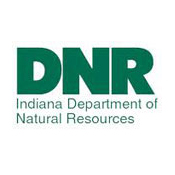
No Asian carp in eDNA tests at Indiana ports
FOR IMMEDIATE RELEASE
Oct. 15, 2010
Indiana Department of Natural Resources
402 W. Washington St. W255 B
Indianapolis, IN 46204-2748
Phone: (317) 232-4200
Media contact: Phil Bloom, DNR Division of Communications
317-232-4003 or pbloom@dnr.IN.gov
Researchers from the University of Notre Dame announced Thursday they found no evidence of Asian carp in their environmental DNA (eDNA) sampling of Indiana ports and harbors near Lake Michigan. The researchers collected 125 samples from five areas in northwest Indiana:
- On Aug. 6, 14 samples were collected from the outflow of Lake George by kayak and by wading into lower reaches of Deep River. One cooler blank was evaluated and also tested negative for bighead and silver carp DNA.
- On Aug. 11, 25 samples were collected from Burns Harbor and 21 from Burns Ditch. All 46 samples and four cooler controls tested negative.
- On Aug. 18, 11 samples were collected from the Gary Boat Slip and 54 samples from Indiana Harbor. All 65 samples and five cooler controls tested negative.
Bighead and silver carp are two species of Asian carp that are considered a serious risk to the Great Lakes. Both are voracious eaters. They consume plankton – algae and other microscopic organisms – stripping the food web of a key source of food for small and big native fish.
Bighead and silver carp were imported into the southern United States to keep aquaculture facilities clean and to provide fresh fish for fish markets. They escaped into the wild in the 1980s and have been moving northward ever since.
They were first detected in Indiana waters in 1995 and have worked their way up the Wabash River, into the East and West forks of the White River, the Patoka River, and the Ohio River and and some of its tributaries.
